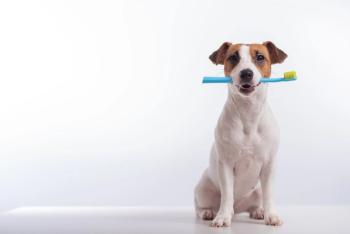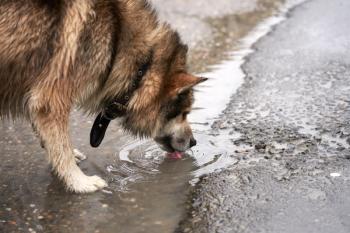
Clinical approach to polyuria (Proceedings)
PU/PD is an extremely common presenting complaint in small animal practice. Probably just as common are animals with polyuria and polydipsia that goes unnoticed by their owners. This is especially true of cats.
PU/PD is an extremely common presenting complaint in small animal practice. Probably just as common are animals with polyuria and polydipsia that goes unnoticed by their owners. This is especially true of cats. When PU/PD is suspected, the most important test is urinalysis. The finding of a concentrated urine suggests that polyuria is not present, and will cause you to question the history given by the owner. Most often, polyuria and polydipsia go hand in hand. For an animal to be polyuria without being polydipsic there would have to be dehydration present. Conversely, if an animal is truly polydipsic, but is not polyuric, insensible fluid losses must be extreme. In either of these cases, striking clinical signs should be present. PU/PD can be verified by having owners measure water consumption of their pets at home. Normal dogs drink between 20 and 90 ml/kg/day, and normal cats can be seen to drink between 0 and 45 ml/kg/day. The amount depends on m,any factors, including activity level, environment, Measurement of daily urine production is more difficult, but it is sometimes done in the hospital, For both dogs and cats, the normal daily urine output is between 20 and 40 ml/kg/day, with normal cats sometimes producing slightly more.
There are many causes of PU/PD. In most cases, PU/PD is caused by primary polyuria and the compensatory increase in water intake. There are disorders of primary polydipsia, in which case the body compensates by increasing urine output. Examples would be psychogenic polydipsia and disorders of the thirst center of the brain.
Below is a list of possible causes of PU/PD
• Primary Polydipsia
• Primary Central Diabetes Insipidus (CDI)
• Nephrogenic Diabetes Insipidus (NDI)
o Renal insufficiency
o Pyelonephritis
o Post-obstructive diuresis
o Hypercortisolism
o Hypoadrenocorticism
o Hyperthyroidism
o Hepatic insufficiency
o Pyometra
o Hypercalcemia
o Hypokalemia
o Glucosuria
o Renal medullary solute washout
Most Common Causes of PU/PD in Dogs
• Renal Disease
• Diabetes Mellitus
• Hypercortisolism
• Pyometra
• Hypercalcemia
• Subacute Leptospirosis
• Hypoadrenocorticism
• Psychogenic
• Advanced Liver Disease
Most Common Causes of PU/PD in Cats
• Renal Disease
• Diabetes Mellitus
• Hyperthyroidism
• Pyometra
• Hypokalemia
The diagnostic workup of PU/PD first requires demonstration of a low urine specific gravity. If the urine is concentrated, polyuria is unlikely. Further testing is done to define the cause of PU/PD once established. Here is a useful algorithm for use in investigation of PU/PD (adapted from Chew DJ, Graves TK, Sorting Out Polyuria and Polydipsia, Proceedings of NAVC 2005)
Newsletter
From exam room tips to practice management insights, get trusted veterinary news delivered straight to your inbox—subscribe to dvm360.




